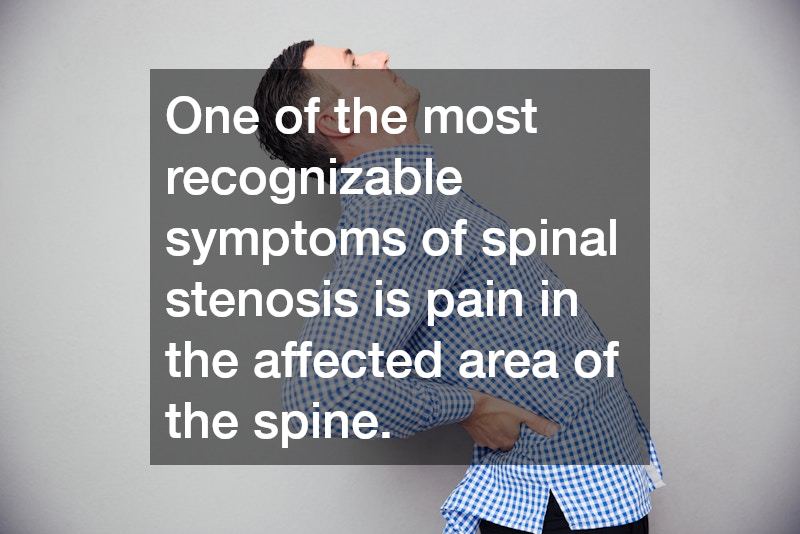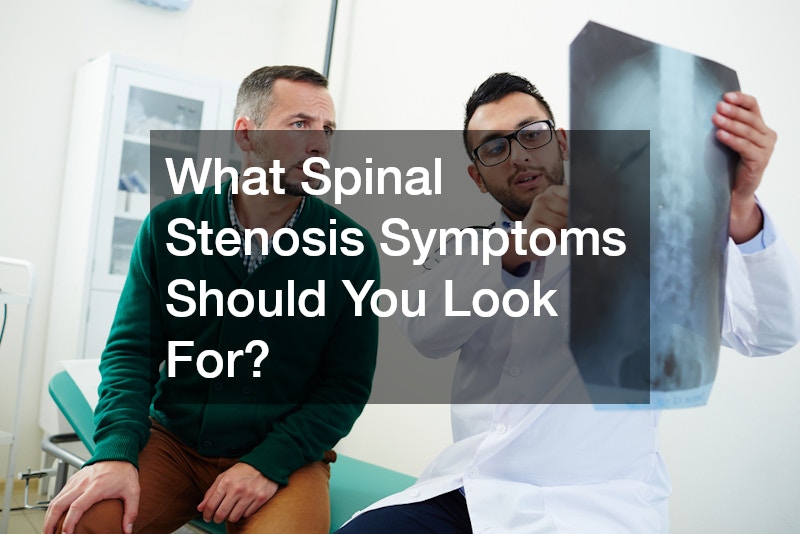Spinal stenosis is a condition that occurs when the spaces within your spine narrow, putting pressure on the spinal cord and nerves. This narrowing can happen in any part of the spine but is most commonly found in the neck (cervical spine) or lower back (lumbar spine). Spinal stenosis often develops gradually and can lead to a range of symptoms that affect your mobility and quality of life. Knowing the spinal stenosis symptoms to watch for is essential for early diagnosis and treatment, which can help manage the condition and prevent further complications.
Here are some of the most common spinal stenosis symptoms you should be aware of.
1. Pain in the Lower Back or Neck
One of the most recognizable symptoms of spinal stenosis is pain in the affected area of the spine. If the stenosis occurs in the lumbar spine (lower back), you may experience persistent or intermittent pain in your lower back.
Similarly, if the narrowing is in the cervical spine (neck), pain will occur in that area.
The pain may feel dull, aching, or sharp, depending on the severity of the stenosis and the pressure on the nerves. Over time, this pain can worsen, especially when standing, walking, or performing activities that require spinal movement. However, it might be alleviated by sitting or bending forward.
2. Numbness and Tingling
Another common spinal stenosis symptom is numbness and tingling in the arms, legs, hands, or feet. This occurs when the spinal nerves are compressed, which interferes with normal sensory signals between your brain and the rest of your body. For cervical spinal stenosis, the numbness and tingling will often be felt in the arms and hands, while lumbar stenosis typically causes these sensations in the legs and feet.
These symptoms might come and go or be constant, and they can vary in intensity. If left untreated, numbness and tingling may become more frequent and persistent, affecting your ability to perform everyday tasks.
3. Weakness in the Limbs
Weakness in the arms or legs can be a more serious spinal stenosis symptom that indicates the condition is affecting nerve function. This weakness often begins gradually and worsens over time, making it difficult to lift objects, walk, or even maintain balance.
For those with lumbar stenosis, leg weakness may lead to difficulty climbing stairs or standing for long periods. In severe cases, spinal stenosis can cause a condition called foot drop, where you have trouble lifting the front part of your foot while walking.
4. Difficulty Walking or Standing
Many people with spinal stenosis report difficulty walking or standing for extended periods. The narrowing of the spine can cause compression of the nerves that control leg movement, leading to discomfort and instability.
A classic sign of lumbar spinal stenosis is that symptoms improve when bending forward, such as leaning on a shopping cart or sitting down. This position temporarily opens up the spinal canal, relieving pressure on the nerves. If you find yourself needing to sit down frequently to relieve discomfort, it may be time to consult a doctor about spinal stenosis.
5. Sciatica
Sciatica refers to pain that radiates along the sciatic nerve, which runs from your lower back down through your hips, buttocks, and legs. This is a common symptom of lumbar spinal stenosis, as the narrowing of the spinal canal can pinch the sciatic nerve.
Sciatic pain typically affects one side of the body and can range from a mild ache to sharp, burning pain. The pain may worsen after prolonged sitting, standing, or walking, and it can sometimes be accompanied by tingling, numbness, or weakness in the leg.
6. Loss of Bladder or Bowel Control
In severe cases of spinal stenosis, the compression of nerves in the lower spine can lead to a loss of bladder or bowel control. This condition, known as cauda equina syndrome, is a medical emergency that requires immediate attention. If you experience sudden incontinence or difficulty controlling your bladder or bowels, seek emergency care as it may indicate a severe case of spinal stenosis.
Recognizing the spinal stenosis symptoms early can help you seek timely medical intervention and prevent the condition from worsening. Pain, numbness, tingling, weakness, difficulty walking, sciatica, and even loss of bladder or bowel control are all key signs to watch for. If you are experiencing any of these symptoms, consult with a healthcare provider to determine the best course of treatment. With early diagnosis and appropriate care, you can manage spinal stenosis effectively and maintain a good quality of life.
.

